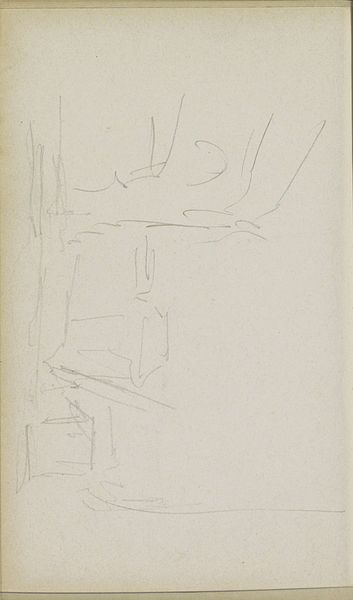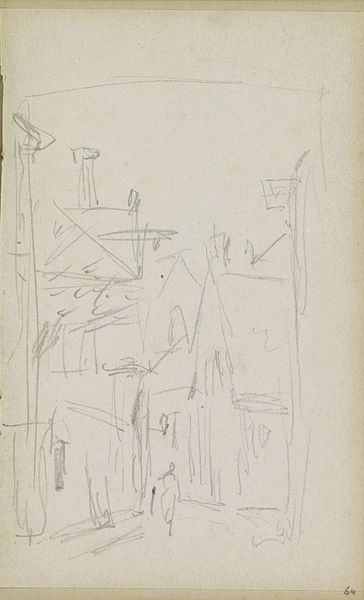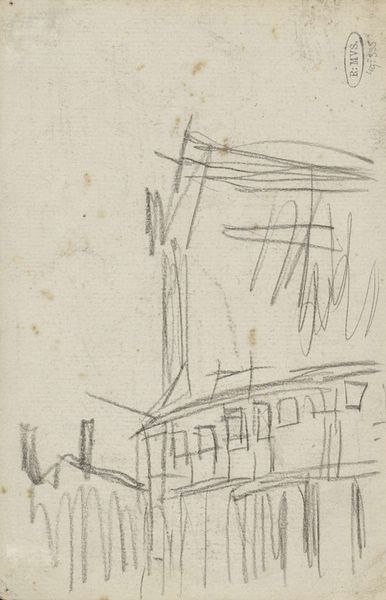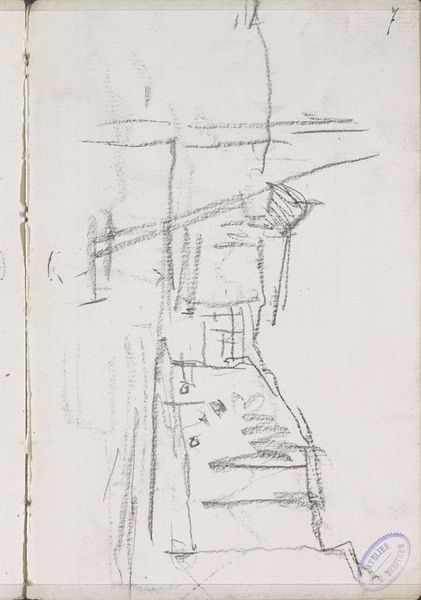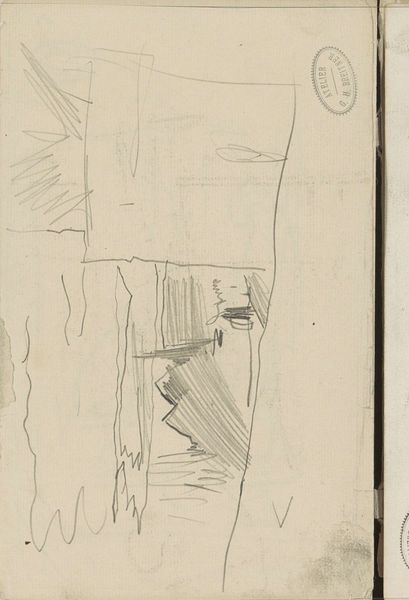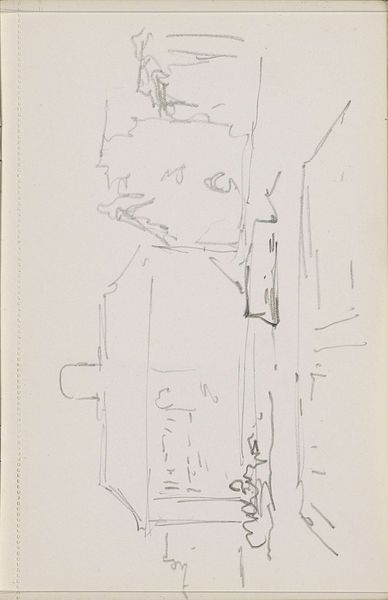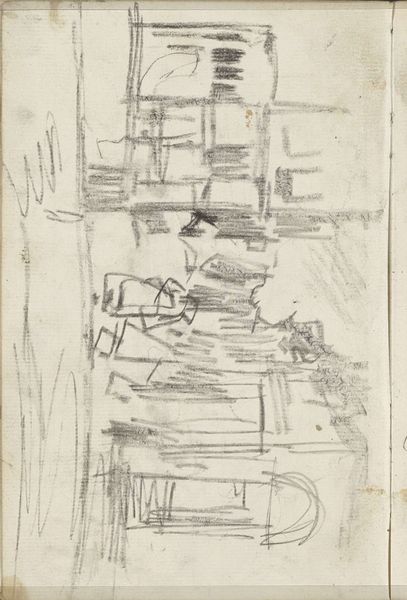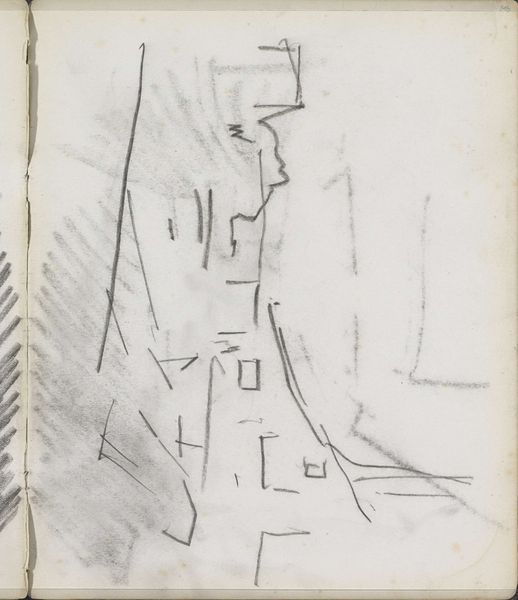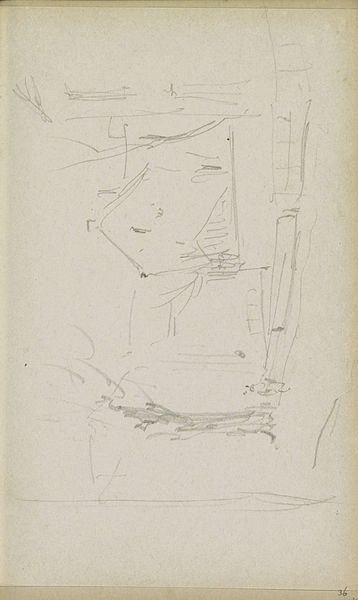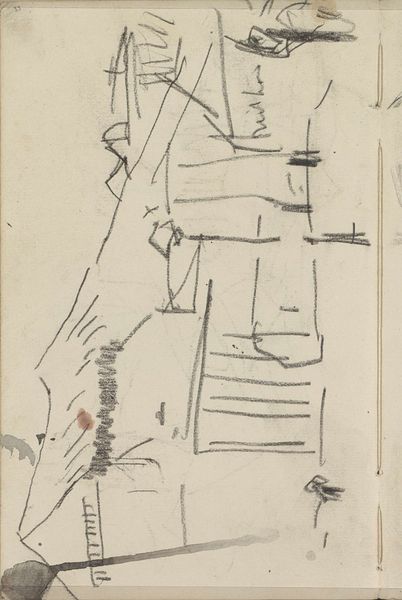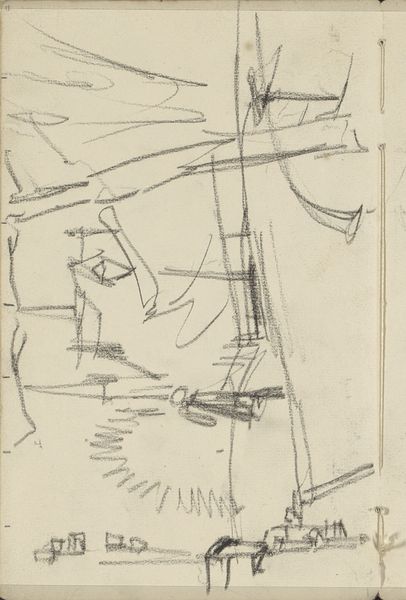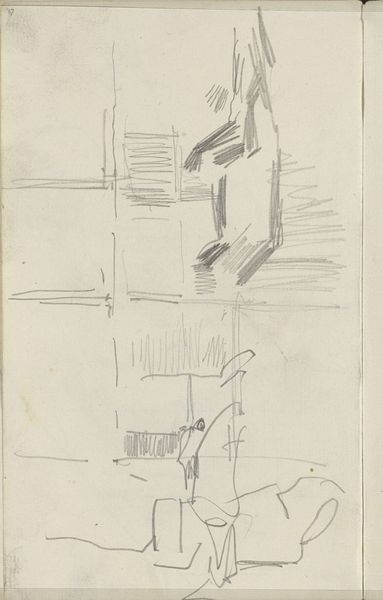
Dimensions: height 201 mm, width 124 mm
Copyright: Rijks Museum: Open Domain
Curator: This is a pencil drawing by George Hendrik Breitner, titled "Figure on the Street, possibly in Amsterdam," created sometime between 1886 and 1923. It's currently held here at the Rijksmuseum. Editor: It's wonderfully evocative. Even in these spare lines, I sense a stillness and solitude, almost as though time itself is suspended in this quiet corner of the city. The starkness and use of line make it compelling. Curator: I agree. And it's crucial to see this within the context of Breitner's overall project. He was deeply engaged with capturing the lived experiences of ordinary people in Amsterdam during a period of rapid urbanization and social change. This sketch hints at that engagement, even in its incompleteness. Editor: You're right. But the composition itself is fascinating. Note how Breitner uses the vertical lines of the buildings to frame the figure, guiding the viewer's eye and creating a sense of depth despite the sketch's overall simplicity. What do you make of the figure itself? It seems somewhat obscured in shadows, no? Curator: The obscured figure can be interpreted in various ways, perhaps as a commentary on the anonymity and alienation that often accompany urban life, particularly for women navigating patriarchal urban spaces in a time of incredible shifts for societal structures, power and social capital. This could subtly represent their marginalization. Editor: Hmm. While that interpretation is valid, one could also argue that the ambiguity is simply a product of the medium. The loose lines invite multiple readings rather than pointing definitively toward the sociopolitical, and allows the viewer to construct the meaning. The unfinished nature of the sketch pushes one's gaze from form to content. Curator: That's precisely where the intersection of art history and contemporary theory become so important. Breitner, known for documenting the undercurrents of societal anxiety through urban life, also often made works representing class dynamics within the context of imperialism and expanding economic opportunity. Editor: Regardless of intent, or its representation, the use of light and shadow in a sketch like this is incredibly refined and thought provoking. It suggests volume and place with such economical mark-making. I'm struck again by the confidence of its construction. Curator: Ultimately, this sketch allows us to connect to the artist's observations of a rapidly changing world and invites us to consider how those changes impacted everyday individuals navigating those streets. Editor: It also serves as a masterclass in visual economy, an example in finding form at the intersections of line and light. I think it highlights the ability to capture essential information and convey feeling while minimizing distraction.
Comments
No comments
Be the first to comment and join the conversation on the ultimate creative platform.
